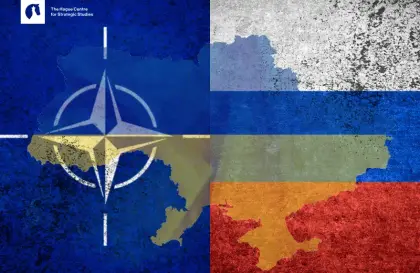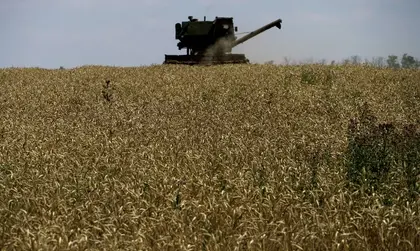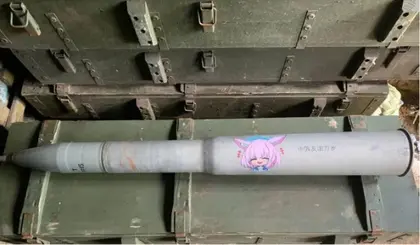On Aug. 27, Amir Abdulla, the United Nations (UN) Coordinator for the Black Sea Grain Initiative, announced that Ukrainian maritime exports of grains and other agricultural products through the Initiative surpassed one million tons since Russia’s blockade ended. Indeed, more than 50 ships have been free to pass through major Ukrainian ports, with more coming and going each day. It’s a start, and it looks promising, but more is still needed.
The Initiative, also known as the ‘grain corridor’, was launched on Aug 1. It comprises a set of agreements signed between Ukraine, Turkey and the UN, and in a mirror fashion between Russia, Turkey and the UN. The agreements allowed, after five months of a Russian maritime blockade, the re-opening three major Ukrainian ports: Odesa, Pivdennyi and Chornomorsk. The agreements enabled the re-export of Ukrainian agricultural products, which had become in desperate demand by many countries, as part of efforts to reverse a large-scale food crisis.
A Joint Coordination Center (JCC) has been set up under the UN’s auspices at Istanbul. Its main role is to register and monitor the movement of ships, and to conduct inspections. This is due to a tightly prescribed list of goods and personnel permitted to go through the ‘grain corridor’ as limited by the agreements. The JCC is headed by a Turkish admiral and its staff have been drawn from all four participants of the Initiative.
Background to the blockade

NATO Needs to Get its Act Together Now, Before it’s Too Late
Since starting its brutal invasion of Ukraine on Feb. 24, Russia imposed a maritime blockade on all major Ukrainian seaports, which traditionally served as the main gateway for Ukrainian agricultural exports.
Its actions led to 22 million tons of grain – already harvested and stored in the major ports – to be temporarily blocked. With Ukraine being the world’s fifth largest grain producer, the Russian maritime blockade had worldwide consequences. After the war started, wheat prices jumped by 40 percent in a matter of days, and remained elevated for months. Prices of sunflower oil jumped by more than 200 percent.
The situation was compounded by the fact that Ukraine’s exports traditionally go to African and Middle Eastern countries that have large populations of poorer people, whose livelihoods depend critically on access to affordable food.
With no way to get access to Ukrainian wheat, millions of people in some of the world’s most vulnerable regions faced starvation. Given the likely political repercussions – a link between rising food prices and political destabilization in poorer countries is well-established – the Russian blockade could have thrown vast regions of Middle East and Africa into turmoil.
Steps toward resolution
Facing such a grim outlook, it is no wonder that the international community tried to find a solution to the grain crisis. Talks about establishing a safe maritime corridor and lifting the blockade of grain exports began in the spring, with UN Secretary-General Antonio Guterres holding consecutive meetings with Turkish, Russian and Ukrainian presidents to discuss the situation and find a solution.
For months, the situation remained tense with no meaningful progress. Many were skeptical that the grain corridor could be reopened, including a number of officials with whom I had a chance to discuss the situation.
Maritime transportation since opened through the minor ports on the Danube River in the South-West of Ukraine – Reni, Izmail and Kiliya – especially after Ukraine’s Armed Forces drove the Russians away from Snake Island. But as these ports could only operate smaller vessels of several thousand tons in deadweight tonnage, this route proved limiting
It is worth noting that, in 2021, Ukraine exported more than 50 million tons of grain, 95 percent via maritime routes. Overall maritime turnover that year exceeded 150 million tons, although the Danube ports, even at maximum capacity, would not have been able to service more than 10 percent of that – i.e. up to 15 million tons per year.
In July, with heavy moderation by Turkey’s President Recep Tayyip Erdoğan, a breakthrough was finally achieved. On July 22, the agreements were signed in Istanbul. Even the Russian bombardment of the Odesa seaport on July 23 – less than a day after the signing of the agreements – did not stop their implementation.
What next?
The world has been able to avert a food crisis and Ukraine has resumed grain exports – much needed to keep the wartime economy afloat.
The first month of the Black Sea Grain Initiative has undoubtedly been a success. Now, with growing confidence among market players in its reliability, shipping volumes need to expand.
Reaching one million tons of exported grain is a good start, but the capacity of the three major Ukrainian ports involved in the operation is 3.5 million tons per month. Getting close to that volume would be the next major milestone for the Initiative.
Hopefully, this milestone will soon be achieved, saving millions of people from hunger and bringing hundreds of millions of much needed export earnings to Ukraine.
The views expressed are those of the author and not necessarily of Kyiv Post.
You can also highlight the text and press Ctrl + Enter






Comments (0)